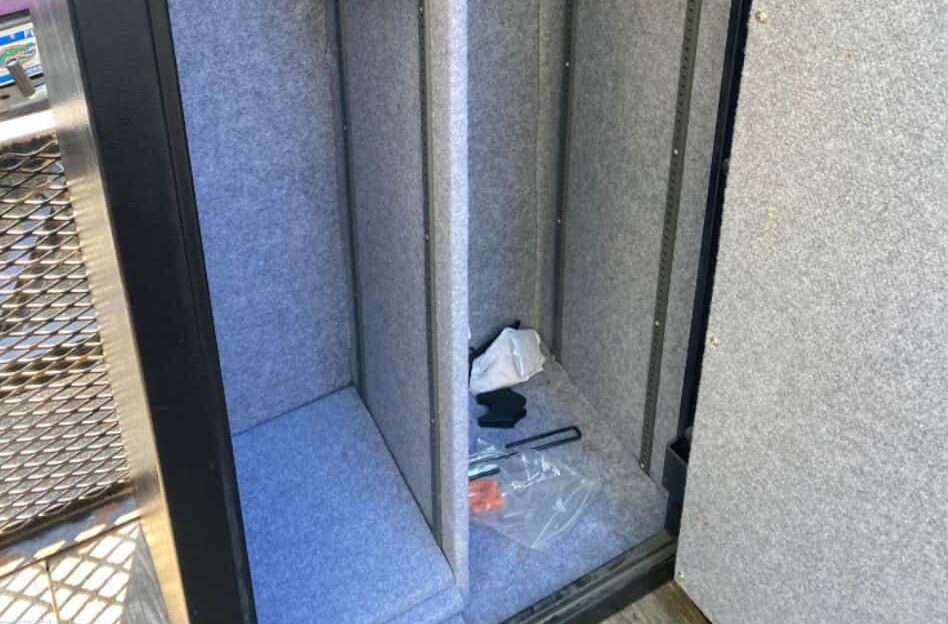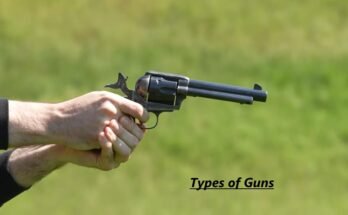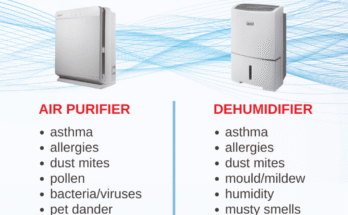The basement often seems like the perfect spot for a heavy, imposing gun safe. It’s out of sight, usually has a strong concrete floor, and feels inherently more secure. But is this common choice actually a good idea? The answer, like many things with firearms safety, is “It depends.” While basements offer unique advantages, they also harbor significant hidden threats to your valuable firearms. Understanding both sides of the coin – and how to mitigate the risks – is crucial for making an informed decision and protecting your investment.
The Allure of the Basement: Why It Seems Like a Good Idea
-
Enhanced Security Through Concealment:
-
Pro: Basements are typically low-traffic areas, away from main living spaces and windows. A safe tucked away in a corner or closet is naturally less visible to casual observers or potential intruders scoping out the main floor. This “out of sight, out of mind” factor is a significant security plus.
-
-
Structural Strength & Easy Anchoring:
-
Pro: Most basements feature thick, reinforced concrete slabs – the ideal foundation for anchoring a heavy safe. Bolting it down is generally straightforward and incredibly effective at preventing theft by brute force removal. The slab can easily handle the weight, even for large safes.
-
-
Temperature Stability (Potential Pro):
-
Pro/Con: Basements often maintain a cooler, more consistent temperature year-round compared to upper floors (which can get very hot in summer). While cooler can be good, consistency is more important than absolute temperature for some aspects.
-
-
Space Availability:
-
Pro: Basements frequently offer more open floor space, making it easier to accommodate a large safe, maneuver it into position, and access it without space constraints.
-
The Hidden Dangers: Why the Basement Can Be Your Safe’s Worst Enemy
-
Humidity & Moisture: The #1 Threat:
-
Con: Basements are notoriously humid environments, often significantly more so than above-ground rooms. This is due to:
-
Ground Moisture: Water vapor constantly seeps through concrete walls and floors, even without visible leaks (“rising damp”).
-
Poor Ventilation: Basements typically have less air circulation, allowing moisture to build up.
-
Cool Temperatures: Cooler air holds less moisture, leading to higher relative humidity (RH%) – the key metric for rust formation.
-
-
The Result: This creates a perfect storm for relentless condensation inside your safe and persistently high humidity levels. Without aggressive mitigation, this will lead to catastrophic rust, corrosion, mold on wood stocks, and ruined optics and ammunition. Basements often have RH levels consistently above 60-70%, while guns need below 50%.
-
-
Flooding Risk: A Potential Catastrophe:
-
Con: Basements are the lowest point in your home. They are the primary target for:
-
Plumbing failures (burst water heater, broken pipe)
-
Sewage backups
-
Stormwater infiltration (through cracks, window wells, or overwhelmed drains/sump pumps)
-
Natural flooding (if in a flood zone)
-
-
The Result: Even a few inches of water can submerge the bottom of your safe. While many safes have some water resistance for short-term fire hose exposure, they are NOT waterproof against prolonged submersion. Water will eventually seep in, ruining contents, destroying fireboard insulation, and causing massive internal corrosion. Electronics (dehumidifier rods, electronic locks) will fail.
-
-
Accessibility & Egress Concerns:
-
Con: Basements often have only one point of entry/exit (stairs). In an emergency (fire, home invasion), accessing your safe quickly might be difficult or dangerous. Conversely, escaping with firearms from a basement during a fire can be extremely hazardous.
-
Legal Note: Some states/counties have regulations regarding firearm storage locations, sometimes prohibiting storage in areas lacking direct egress to the outdoors. Check your local laws.
-
-
Potential Structural Weaknesses (Older Homes):
-
Con: In very old homes with stone/rubble foundations or compromised concrete, the floor might not be suitable for the extreme point-load weight of a large safe (easily 500-1000+ lbs empty). Professional assessment may be needed.
-
-
Dust and Debris:
-
Con: Basements, especially unfinished ones, tend to be dustier. More dust entering the safe during opening/closing can mix with oils and moisture, potentially accelerating corrosion or gumming up mechanisms.
-
Making the Basement Work: Essential Survival Strategies (If You Must)
If, after weighing the risks, you decide the basement is still your best option, implementing robust mitigation strategies is NON-NEGOTIABLE. Here’s your survival kit:
-
Aggressive Moisture Control: Your Top Priority
-
Dehumidifier Rod is MANDATORY: Install a high-quality, UL-listed dehumidifier rod (e.g., GoldenRod or equivalent) inside the safe. This is the single most effective tool for preventing condensation by keeping the internal air temperature slightly above the wall temperature.
-
Rechargeable Desiccant Dehumidifier: Add a large-capacity unit (e.g., Eva-dry E-500 or larger) as a backup/primary moisture absorber. Recharge it RELIGIOUSLY (every 1-3 months in a basement).
-
Digital Hygrometer: Place a reliable hygrometer inside the safe. Target 40-50% RH. Monitor constantly. Calibrate it annually.
-
VCI (Vapor Corrosion Inhibitors): Use VCI emitters (bags, chips – Zerust, Hornady) throughout the safe for an added molecular layer of protection on metal surfaces.
-
Whole-Basement Dehumidifier: Seriously consider running a dedicated, properly sized dehumidifier for the entire basement space to lower the ambient humidity attacking the safe. Empty its tank frequently.
-
Improve Basement Ventilation: If possible, increase air circulation (fans, ensure vents are clear).
-
-
Flood Defense: Elevate and Protect
-
DO NOT PLACE DIRECTLY ON CONCRETE: This is critical for moisture wicking and flood protection.
-
Build a Sturdy, Elevated Platform: Use pressure-treated lumber, dense plastic grid panels designed for flood zones (e.g., FloodSax base), or commercial safe pallets. Elevate the safe at least 4-6 inches off the floor. This protects against minor seepage and wicking.
-
Consider a “Safe within a Safe” Approach: Place moisture-absorbing products (desiccant packs) under the safe on the platform.
-
Sump Pump & Backup: Ensure your basement has a working, high-capacity sump pump with a battery backup system. Test it regularly.
-
Seal Cracks & Window Wells: Address any potential water entry points in the basement walls and around windows.
-
-
Anchoring: Do It Right
-
Absolutely Anchor: Use high-quality concrete anchor bolts (wedge anchors or sleeve anchors rated for your safe’s weight). Drill into the slab through your elevated platform if necessary. This prevents theft and keeps the safe stable.
-
-
Location Within the Basement:
-
Avoid placing the safe directly against an exterior foundation wall where moisture penetration is highest.
-
Keep it away from water heaters, washing machines, sinks, or floor drains.
-
Choose the driest, most stable corner available.
-
-
Enhanced Security & Access:
-
Camouflage: Consider building the safe into a closet or behind a false wall panel for added concealment.
-
Lighting: Ensure the area has good lighting for safe access.
-
Emergency Plan: Have a clear plan for accessing firearms in an emergency and escaping the basement safely if needed. Inform trusted family members.
-
When to Absolutely Avoid the Basement:
-
Chronic, Uncontrollable Dampness: If your basement constantly feels damp, smells musty, or has visible mold, it’s a no-go zone for valuable firearms.
-
History of Flooding: Even minor past flooding incidents indicate a high risk. Don’t gamble.
-
Located in a FEMA Flood Zone: The risk is simply too high.
-
Inability to Implement Robust Moisture/Flood Controls: If you can’t commit to running dehumidifiers 24/7, checking desiccants monthly, and elevating the safe properly, choose another location.
The Verdict: Proceed with Extreme Caution & Diligence
Is it okay to put a gun safe in the basement? It can be, BUT ONLY IF you aggressively and relentlessly combat the inherent environmental threats. The basement demands the highest level of vigilance regarding moisture control and flood prevention.
For most gun owners, especially those with high-value collections or living in humid climates, a climate-controlled main-floor closet, bedroom, or dedicated office is often a safer, lower-maintenance choice. You sacrifice some concealment but gain significant environmental stability and easier access.
If you choose the basement:
-
Elevate the safe significantly off the concrete floor.
-
Anchor it securely to the slab.
-
Install a dehumidifier rod and use large rechargeable desiccant units.
-
Monitor humidity constantly with a hygrometer.
-
Implement basement-wide moisture control (dehumidifier, ventilation).
-
Have a reliable flood prevention/mitigation plan (sump pump, sealing).
-
Maintain rigorous gun care (clean, oil before storage).
The basement can work, but it transforms gun safe ownership from a “set it and forget it” task into an active battle against the elements. Be prepared to fight that battle diligently, or choose higher ground. Your firearms’ longevity and functionality depend on it.



